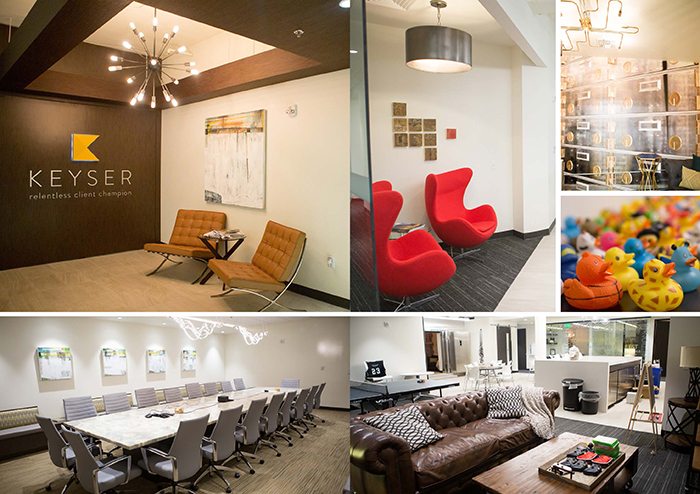Anybody who has managed construction of a new office building or the renovation of an existing one can attest to the challenges that come with it, which can cost serious time and money if not properly addressed.
At the end of 2017, Colliers International reported year-to-date office completion in Metro Phoenix totaled over 2.1-million square feet and net absorption accounted for 1.6-million square feet. This year, net absorption is expected to increase to 2.5-million square feet. Overall, the Metro Phoenix office market experienced its seventh consecutive year of declining vacancy, which bodes well for future demand for office space.
Keeping that in mind, Adam Felson, director of officemorph, a San Francisco-based project management firm that oversees commercial real estate improvements, office build-outs and office re-designs, compiled a guide for office managers and executive to better navigate construction challenges by identifying “13 Mistakes to Avoid When Building Out Your Next Office.”
Since 2001, he has worked on office projects of all sizes for companies ranging from start-ups to international corporations. Throughout his years of experience, these are the most frequent mistakes that people make when building out an office.
Mistake 1: Bidding out the project
While “design-bid-build” is a common approach to construction, Felson says, it can add 4-6 weeks to a project’s timeline and if three contractors bid, each proposal is often very different. He recommends bringing a contractor on board during the design process to help the team, which will usually lead to smarter, more cost-effective designs with fewer surprises.
Mistake 2: Letting your landlord manage the project
While this may sound easy and convenient at the time, tenants should understand that landlord’s motivations may not align with the vision for your company’s new workspace. Landlord-run projects are often “turn-key” where the landlord manages the scope of work, says Felson, but instead recommends utilizing a “Tenant Improvement Allowance” (TIA), which allows the tenant more control over the project’s design and budget.
Mistake 3: Signing the lease too soon
Before rushing into a legally binding lease, Felson recommends involving the project’s design and construction teams to better understand the full scope and potential unforeseen costs of a project. He adds, “Beyond construction costs, also develop a budget for any consulting fees, audio-visual, cabling, furniture, security and other related expenses.” Additionally, setting dates in the lease for when construction milestones need to be reached can help keep the project on schedule and on budget.
Mistake 4: Using vague contracts
“Clearly written contracts with your architect, contractor, and any other vendors protects your best interest,” says Felson. “The most important element of a contract is the final proposal attached,” which is what everyone refers to. Before singing contracts, he says to make sure the final proposal exhibits are crystal-clear and comprehensive.
Mistake 5: Not getting input from employees
Today’s workspaces are vital in a company’s ability to attract and retain the best employees as well as a means to fuel increased productivity and overall job satisfaction. “With all these benefits at stake,” Felson says, “you must seek input from your people before finalizing your designs.” To do so, he suggests conducting an employee survey, interviewing each department head and holding a design brainstorming session.
Mistake 6: Giving everyone just one workspace
Open office designs, laptops and cellphones have all changed the way employees use the office, but at the end of the day, the most important thing is that employees are being productive. Thus, Felson says, “Offer mobile employees spaces that match their tasks,” such as private phone booth rooms, an enclosed quite room and home base workstations.
Mistake 7: Putting off planning your move
First tip, don’t put off planning for your move. Felson says, building a strong relationship with property management teams at the old and new office to get a clear sense of rules around moving will prevent unexpected delays. Lastly, don’t forget to decommission your old space.
Mistake 8: Running meetings like a circus
“Dysfunctional meetings result in dysfunctional projects,” Felson says. Overall, everyone should leave the meeting with a clear understanding of who’s supposed to do what by when.
Mistake 9: Finding surprises during demolition
Felson says, “Before swinging any sledgehammers, check for surprises above the ceilings, under the floors and above the walls.” But, the first step is to ask building management for as-built drawings for electrical, mechanical, plumbing and sprinklers.
Mistake 10: Seeing change orders too late
Finding out about change orders at the eleventh hour of a project can jeopardize a project’s schedule and budget, making it harder to properly manage. Felson recommends setting firm deadlines (1-2 weeks) for turning any estimated costs into official change order.
Mistake 11: Taking too long to pay
Maintaining a project’s schedule is typically a key factor to its success, which can be impacted if firms take forever to pay invoices. There’s a simple solution though. Felson says, “If you pay your team faster than other clients, they will likely make your project their top priority.”
Mistake 12: Turing the punchlist into a party
The punchlist is the final chance to make sure everything is properly built and all the details are right. “Don’t make the punchlist an open invitation to your entire project team,” Felson says. Instead, it should only require four people: the client, project manager, architect and contractor.
Mistake 13: Not hiring a professional project manager
Managing an office project takes a lot of extra attention and skills that can take away from someone’s ability to effectively perform their regular duties. Nelson says, “Hiring a professional [project manager] can free you and your key employees to focus on your regulate duties, instead of getting swamped with distractions from you office build-out.” Leave it to the pros that have done it many times before.




